
Seasonal in September
British Produce


Imported Produce


Vegetables, Fruit and Nuts
Vegetables
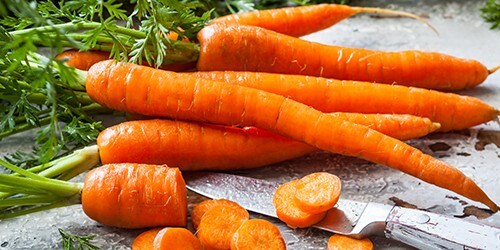
CARROT:
At its best: September to April
The classic orange carrot is sweet, crunchy, and earthy, whereas the purple kind are peppery and extremely sweet. Carrots can be enjoyed raw as a snack, pureed into a soup, roasted, boiled, or fried. The most popular carrot food pairing is the 'mirepoix’, a base for a sauce or stew; celery, onions, and carrots work simply beautifully together.
Chef Suggestions: Carrots are an extremely versatile vegetable which is readily available all year round. It is great in slaw, fermented, or pickled.
We recommend: You could puree, braise, or roast a whole carrot with honey orange and cardamom. Alternatively, the natural sweetness of a carrot creates a great ingredient in cakes and bases.
Flavour pairings: Anise, cumin, cardamom, orange, ginger, honey, cinnamon, walnut, swede, lamb, duck, and coriander.
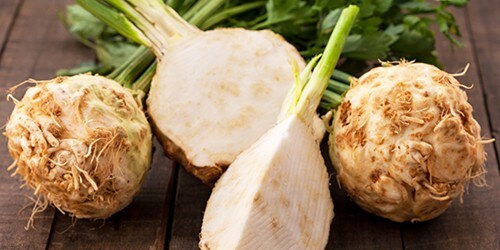
CELERIAC:
At its best: September to October
This root vegetable has a distinct fresh-earthy taste; its sweetness is more noticeable when it’s cooked. A popular way of preparing celeriac is to mash them like potatoes, but they can also be pureed into soups, tossed in salads, and eaten raw or cooked. Meats and fish are traditional food pairings, but strong cheeses, warming woody spices, and fresh vegetables also complement celeriac’s earthy sweet taste.
Chef Suggestions: Use your raw seasonal celeriac for a remoulade, wonderfully paired with a lobster roll.
We recommend: Celeriac is particularly great in soups, roasted, pureed/mashed or salt-baked.
Flavour pairings: Roast beef, brisket, shellfish, lemon, mustard, blue cheese, and truffle.
Fruit and Nuts
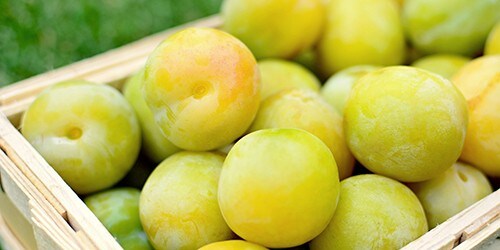
Greengage:
At its best: August and September
Greengages belong to the same family as European plums but trace their origins to Iran (Persia). They are a unique fruit that can offer a range of tastes depending on their ripeness. When under-ripe, they can have a tartness similar to rhubarb or gooseberry. However, when perfectly ripe, they are known for their fine confectionary flavour, becoming sweet and juicy. They can be enjoyed fresh or used in various cooking applications, both sweet and savoury. To extend their shelf life, greengages can be preserved in alcohol or turned into jam. They are also delicious when eaten fresh and are a good source of vitamins A and C, as well as dietary fibre, making them a healthy and tasty addition to any diet.
Chef Suggestions: You can bake greengages in a crumble or pie, or simmer them on the hob with water to create a loose compote. Regardless of the cooking method, greengages retain their unique texture, with distinct skin and flesh. For a smoother consistency, the cooked greengages can be blended and strained through a fine sieve. The resulting puree can be used to create a variety of dishes, such as cocktails, jellies, or sorbets.
We recommend: Greengages have high pectin levels, making them a good fruit for preserving. To prolong enjoyment, greengages can be preserved in alcohol, turned into a jam, or poached and then frozen.
Flavour profile: Sweet and tart
Flavour pairings: Work amazingly in pastry dishes and act as a good foil for oily fish like mackerel. They also pair well with flavours such as ice cream, nutmeg, vanilla, star anise, cinnamon, ginger, and pecans. Additionally, greengages complement soft cheeses like Brie and Camembert.
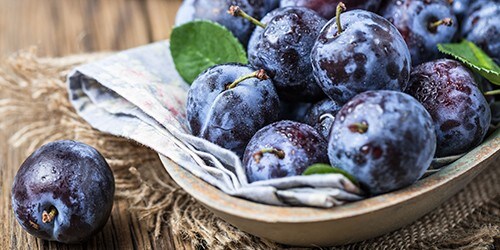
Plums:
At its best: August – October
Plums are the perfect fruit to represent the onset of autumn, as they come in a range of varieties and offer a mellow sweetness. Despite their differences in sweetness, they all share common traits such as smooth, colourful skins and a hard stone in the centre. The skins can range in colour from red to green, and the natural bloom on their surface is normal. All types of sweet plums can be enjoyed raw or cooked in a variety of ways. They can be halved and roasted, poached whole, or stewed. They are also delicious baked in pies and crumbles. Since their season is late summer and early autumn, any abundance of fruits is perfect for preserving.
Chef Suggestions: The soft, sweet, and juicy flesh of plums are great for making jams, chutneys, sauces, and puddings. Plums can also be preserved by salting them, a technique commonly used in Japan. They also make a great accompaniment for the game.
We recommend: Choose plums with smooth, unblemished skin and a chalky bloom. The flesh should be firm but give slightly when pressed. Plums that feel soft at the cleft are overripe, but still great for purees. As a hint, if you need to remove the plum skin, it is easier done after cooking.
Flavour profile: Sweet and sour.
Flavour pairings: Almonds, hazelnut, cinnamon, citrus, black pepper, honey, vanilla, arugula, red wine, ginger, raspberries, goat cheese, yoghurt, berries, other stone fruits, bourbon, chicken, pork, prosciutto, and duck.
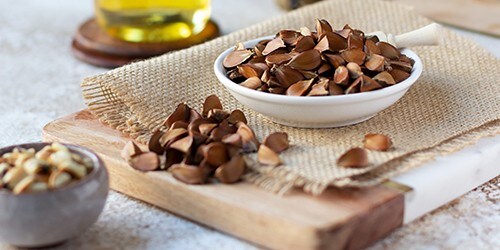
Beechnuts:
At its best: September
Beechnuts are small, nutritious nuts that grow on beech trees during the autumn season. These protein-rich nuts have a prickly outer husk that opens up when they are ripe, revealing two distinctly shaped nuts with three pointed sides. The seeds have a fibrous inner shell, which can be removed with a fingernail once the nuts have dried. Although they have a slightly bitter taste, they are safe to eat in small quantities when raw. However, due to the presence of saponin glycoside, a toxin that can cause digestive issues, it's recommended to cook them before eating. Roasting the nuts not only enhances their flavour but also eliminates the toxin.
Chef Suggestions: The rich oil can be pressed out and used to add flavour to salad dressings. Roasting and grinding the nuts can provide a coffee substitute while grinding them into flour can be used in cake recipes. Once the nuts have been roasted, you can add them to your morning cereal or smoothie bowl. You can also sprinkle salt over them, add to bread recipes, or create the perfect topping for a salad.
We recommend: Dry them for about 2-3 weeks after removing the outer husks by laying them out in a well-ventilated indoor space. After curing, they can be stored for years as long as the interior shell remains intact. To store, keep the nuts in their shells unless they are going to be used right away.
Flavour profile: Bitter and astringent
Flavour pairings: Leafy salad greens, apples, pears, cheeses, pork, chicken, chocolate, and most roasted vegetables.













